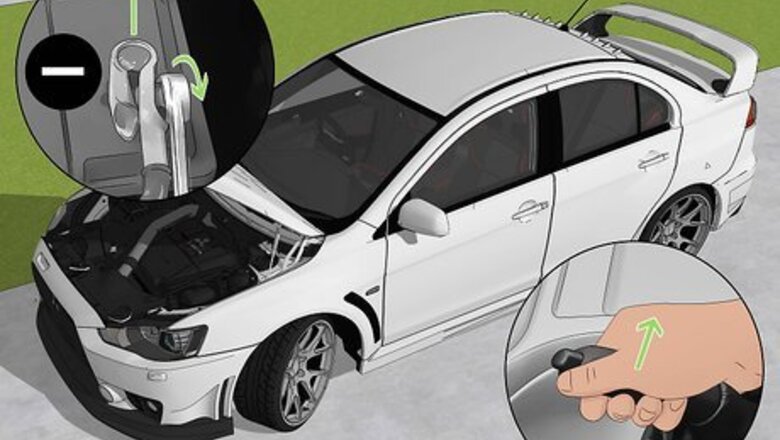
views
How to Take Out the Old Stereo

Set the parking brake and disconnect the negative cable from your car battery. Be sure to do this to avoid short-circuiting the electrical system during the installation, which could lead to fire or physical harm for you. For instructions on disconnecting the battery, see How to Disconnect a Car Battery.

Unscrew any screws that are securing the trim in place. Be careful to remove all screws before trying to pry off the trim or you may break it.

Remove the trim. For some cars, you may need to remove several pieces of plastic trim, usually working from the bottom up. If you need to remove trim that includes any knobs or drawers, remove them before trying to pry off the trim. Use your hands or a pry tool to pry off each piece of trim. Pry tools are specifically for this purpose and will not damage the trim pieces.
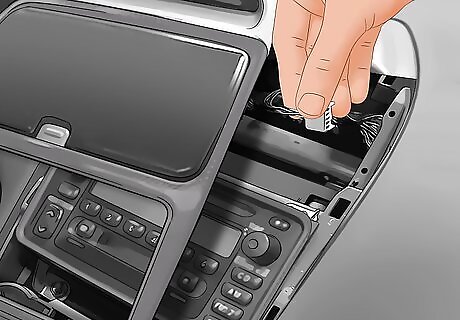
Pull out any necessary components. If you need to remove any components before being able to access the stereo, do so. Disconnect components that are wired to the car. Take a picture of how each is wired for later reference.

Loosen the stereo. Different cars may have varying elements securing the stereo in place. If the stereo is held in place by screws or nuts, loosen them with the appropriate tool (screwdriver or nutdriver, respectively). If the stereo isn't held in place by screws or nuts, you'll need to use a radio-removal key. This tool is commonly necessary in Ford vehicles. Radio-removal keys (sometimes also referred to as radio-removal tools) will typically either be in an elongated horseshoe shape or will have a circular shape at one end and a notched shaft at the other. They’re available at most auto-parts stores. Insert the keys into the two small slots in the face of the stereo. You will release a mechanism holding the stereo in place. Slide the radio-removal keys into each slot again until you feel the stereo loosen from in its housing. You should then be able to pull out the stereo relatively easily.
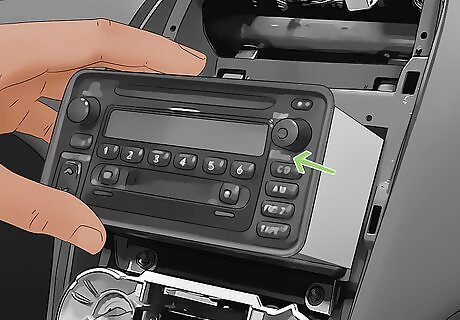
Pull the stereo out of the panel. You may want to use needle-nose pliers to grip the edge of the stereo and help you pull it out. Pull it gently, and if the stereo doesn't come out easily, double check that you haven't missed any components that may be holding it in place.
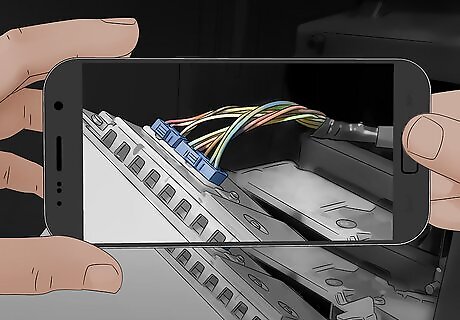
Take a picture of how the stereo is wired. This is an important step because the photo will serve as a reference later when you’re wiring in the new stereo.
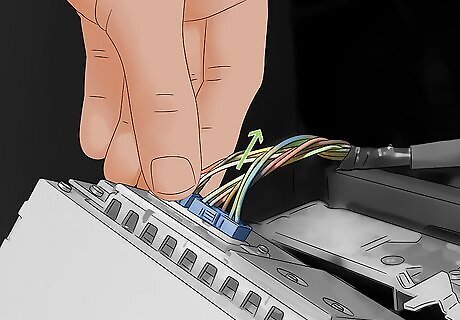
Unplug the stereo connections. You’ll see a series of wires connected to the back of the stereo, and you’ll need to disconnect each of them. First unplug the antenna wire, which will typically be a thicker wire plugged in separately from the rest. Once it’s unplugged, you should be able to move the stereo around more freely. Next unplug the each of the wire harness connectors. There will typically be several of these and you can recognize them because a series of wires will feed into each one. The plastic piece into which the wires are fed should have either a tab or a button you can push, which will release the harness.
How to Install the New Stereo

Match up the wires. Match the wires of the car’s harnesses to the new stereo’s harnesses. Each harness connector is unique, so it should be easy to figure out which ones fit together. To be safe, check the wiring diagrams for both your car and the new stereo to verify you’ve connected them correctly. If your car's stereo doesn’t use wire harnesses, you’ll need to match up each wire manually. The wires are color-coded; however, the wires on an after-market stereo may not match with the color-coded wires in your vehicle. It's best to study and follow the wiring diagram that came with the stereo. Connect the matched wires. There are two options for connecting the wires, crimping or soldering. Crimping is faster and easier, but soldering will provide a more stable and secure connection. Be sure to use the proper size crimper and don’t try to bundle the wires with tape — it will eventually dry out and fall off. Bundle wires using zip ties instead.
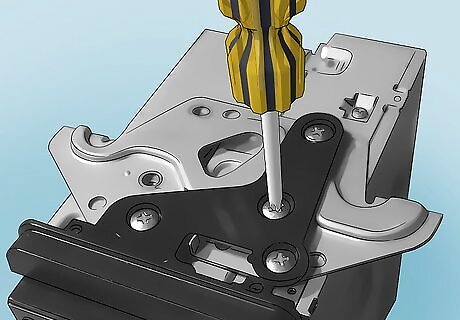
Assemble the mounting kit. If your new stereo came with a separate mounting kit, assemble it according to the stereo's instructions (it will often mean fitting a metal housing sleeve into the mounting frame). Push down on the tabs located around the metal sleeve with a screwdriver to secure the metal sleeve in place.
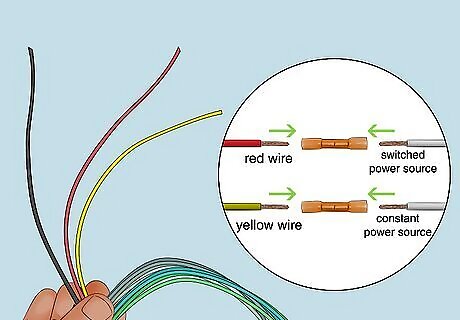
Connect the power source. Typically, if you have a wiring harness, this connection will be made when you connect the new stereo harnesses to the harnesses in the car. If you aren't using a wiring harnesses, you’ll need to manually connect the power. Determine whether your car has a switched power source (typically a red wire) or a constant power source (typically a yellow wire). Some vehicles even have both types of power sources. For more information on switched versus constant power, go here.
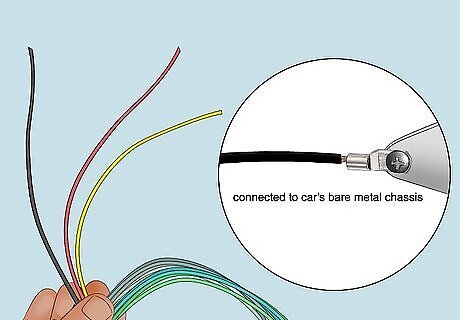
Ground the stereo. If you're using wiring harnesses, this connection will be made when you connect the harness pieces. If you aren't using a wiring harness, you'll need to locate the bolt, wire, or screw that connects with the car's bare metal chassis. Loosen the bolt, wire, or screw and slip the stereo's ground wire (usually black) underneath, then tighten. Note that the ground connection is important to the optimal performance of the stereo. If the ground wire doesn't connect to the bare metal, it won't work. And if the ground wire connection is loose, it could result in poor audio output. Sand down the area with sand paper to ensure a good connection.
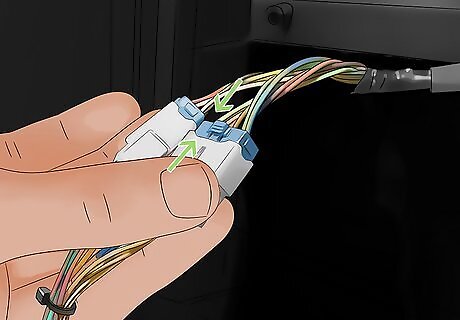
Connect the remaining wires. Plug in the antenna cable and connect the stereo's wiring adapter to the the car's wire harness. Connect the output converter if one is needed to make the new stereo compatible with the car's audio system. Have in mind that all wires should be connected in the end and there should no single one hanging unattended.

Test the stereo. Turn the power on and test the AM, FM, and CD components. Test the fade and balance settings to be sure the speakers are working properly. Turn the power back off.
How to Finish the Installation
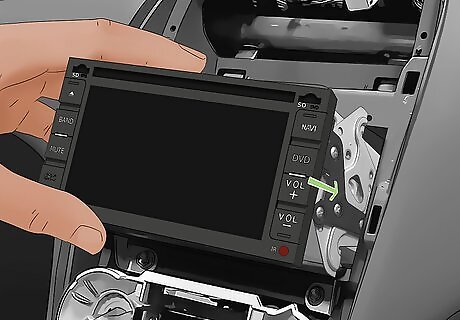
Push the stereo into place. When the stereo is fully in, you should hear it click into place.
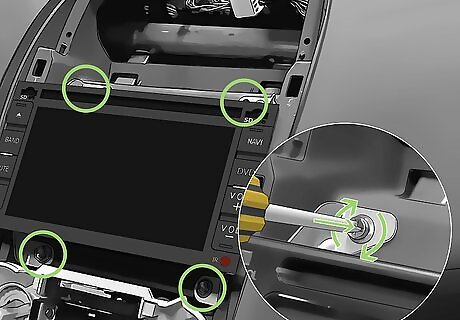
Reconnect the components. Fasten in any screws that are needed to hold the stereo in place, reconnect any wired components, and replace any knobs or drawers that were removed.

Snap all the pieces of trim back into place over the stereo. Double check that all screws and trim pieces are securely in place.
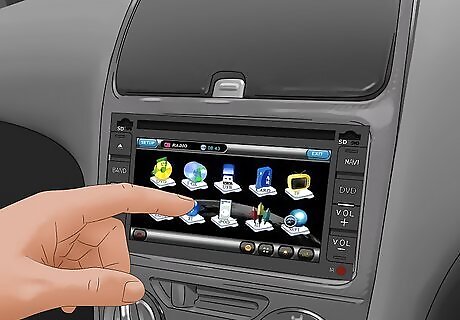
Try out the new stereo. Turn the car power on again and play around with the stereo and its settings to be sure everything is in working order.

















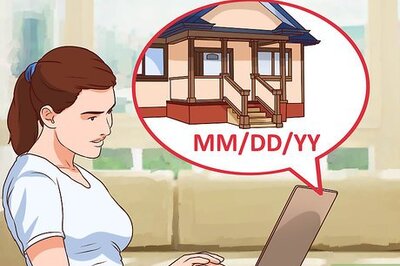
Comments
0 comment